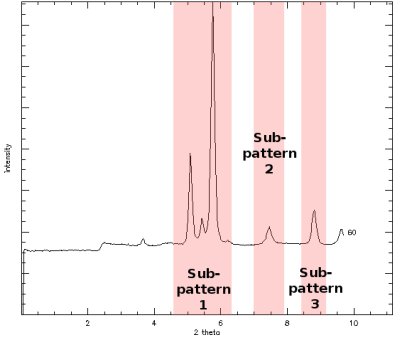|
Texture
In works Memo |
Multifit /
Peak Fitting In MultifitSlicing datasets in subpatternsFits in Multifit assume that you do not have too many peaks and that the background is linear. Therefore, it is necessary to define sub-patterns in the image. Select each sub-pattern so that
In the example below, I decided that a set of 3 sub-patterns will be appropriate, the first include 3 peaks, the second and third only one. Peaks are far off the side of the diffractograms and will never get out of the diffraction image.  Choosing sub-patterns Select range in azimuthSometimes, data may not be available over the whole range of azimuth. This may be for various reasons
It is important that, for each subpattern, you know the range of azimuth for which peaks can be fitted. Those ranges in azimuth should be available for all images you want to deal with. If you do not ensure this, multifit will get lost when peaks disappear and will most probably crash. Peak shape models3 types of models are available for the peak shape
Gaussian and Lorentzian peaks will have 3 parameters: position, intensity and half-width. Pseudo-voigt peaks have 4 parameters: position, intensity, half-width, and relative weight of the Gaussian and Lorenzian profiles. Detailled equations for the peak profiles are below:  Gaussian peak profile  Lorentzian peak profile  Pseudo-voigt peak profile |